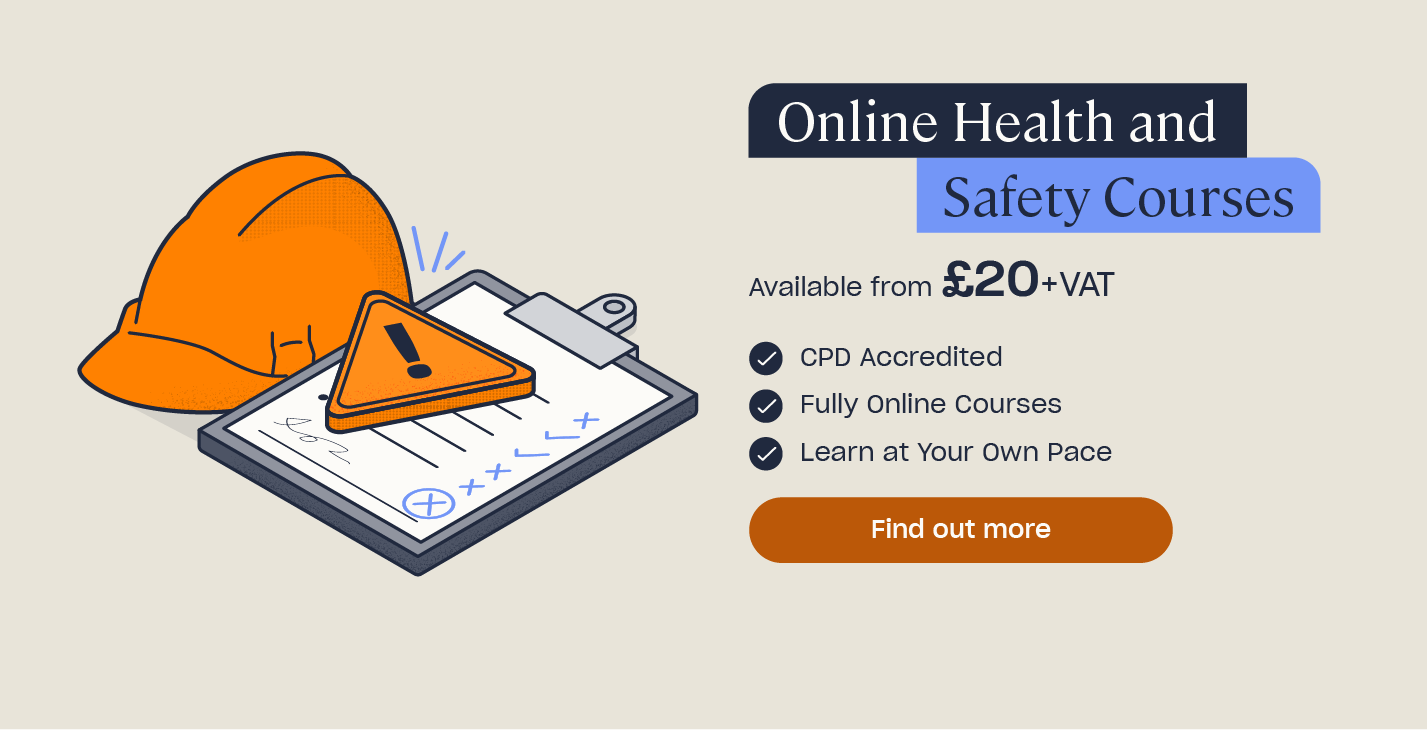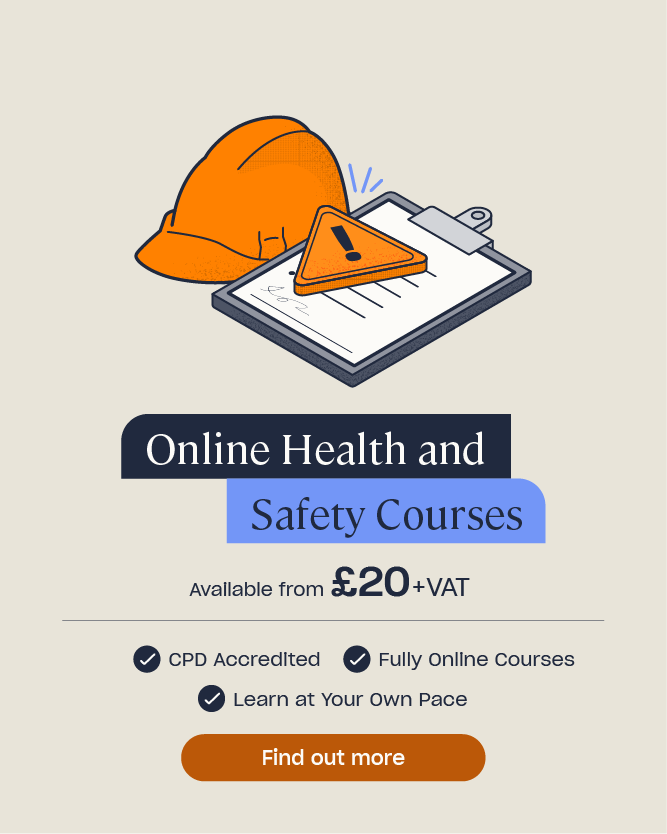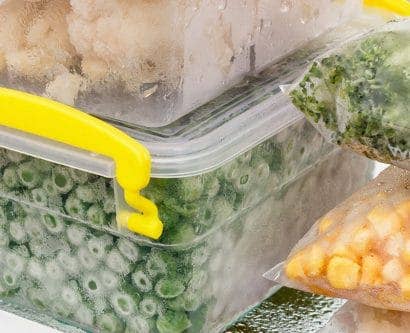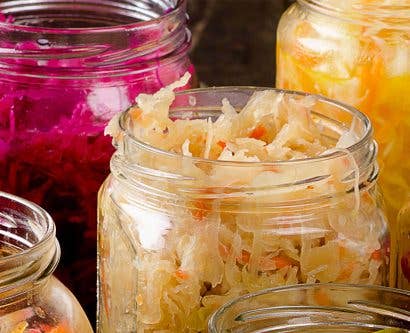Health and Safety in a Bakery: Free Checklist
When people think of the most dangerous jobs in the UK, they might not imagine that bakers would make the top ten, let alone be top of the list. However, in recent statistics, the HSE have found that bakers and flour confectioners have an average work-related injury incidence rate of 18.2 times the average workplace. This shows that health and safety in a bakery is a prevalent issue that employers and employees need to be aware of.
In this article, we will outline the most common risks associated with working in a bakery, and explain the regulations. We will also look into preventing bakery hazards, and provide you with a free, downloadable inspection checklist which can help you identify the risks in your workplace.
Looking to learn more?
Staff need to be sufficiently trained to handle occupational hazards, and it’s always helpful to improve their knowledge. Check out our range of Health and Safety courses which cover the fundamentals any bakery would need including Workplace First Aid and Control of Substances Hazardous to Health (COSHH).
What are the Health and Safety Risks in a Bakery?
There are health and safety risks in most job sectors, whether this is working on a construction site or in an office building.
In a bakery, while adhering to food safety and hygiene laws – which are crucial in order to avoid food safety hazards – there are also a number of potential health and safety risks that may pose a danger to employees themselves. Being aware of these risks can help you to put control measures in place to prevent accidents or ill-health from occurring.
We’ll look into some of the most common health and safety risks in a bakery below.
Occupational Dermatitis
Working in a bakery places staff at risk of developing an occupational skin disease, such as dermatitis or eczema. This is because the skin frequently comes into contact with dough, spices and detergents – all of which when exposed to the skin on a regular basis can cause irritation.
Staff are also required to wash their hands at a higher frequency than the average person. Washing your hands often – while being one of the best ways to prevent spreading bacteria or viruses – can damage the protective barrier of skin, leading to a skin condition developing.
Exposure to Harmful Substances
Bakers can come into contact with a number of harmful substances. However, flour dust is one of the most prevalent risks of health and safety in a bakery. It is classed as a hazardous substance and is unavoidable for a baker.
Exposure to flour dust can cause:
- Irritation to the eyes – causing them to become red, watery, or even developing the condition conjunctivitis.
- Irritation to the nose – causing it to become sore and runny (rhinitis).
- Asthma – causing the worker to suffer breathlessness, bronchitis and may result in them needing to use an inhaler.
- Occupational dermatitis.
Flour dust is also flammable, so controlling air-borne particles should be a top priority.

Slips and Trips
Slips and trips are the most common cause of non-fatal injuries at work in Great Britain. This is because a slip or a trip can happen anywhere, and a bakery is no exception.
As food preparation and cooking is a large part of the role of a baker, floors can easily become wet or dirty and therefore, easy to slip on. There may also be loose cables, stock obstructing walkways or stairs that can pose a risk.
Manual Handling
As with many jobs, working in a bakery involves lifting heavy loads – whether this is stacking and unstacking containers, moving stock or pushing racks and bins. If done incorrectly, these activities can cause acute musculoskeletal injuries to the neck, back and legs.
Certain bakery handling activities also involve significant repetition – especially of the hands, elbows and shoulders. Over time, this can lead to a number of repetitive strain injuries, such as:
- Aches and pains.
- Stiffness.
- Weakness.
- Tennis elbow.
- Frozen shoulder.
- Carpal tunnel syndrome.
Appliances and Machinery
Appliances and machinery are one of the main causes of non-fatal and fatal injuries to workers in bakeries.
The main risk associated with appliances is burning from an oven, or another heat-related appliance, but there are also a number of hazards to consider when using machinery such as mixers, dough moulders and pie and tart machines.

The hazards include the potential risks of:
- Crushing.
- Shearing.
- Cutting, severing or puncturing.
- Entanglement.
- Trapping.
We will look into ways in which to prevent these kinds of risks from occurring further down in the article.
Why are Safety Rules and Regulations Important for Bakeries?
It is primarily an employer’s duty to ensure that health and safety measures are put in place. However, all food handlers have a part to play in adhering to, and upholding them so they remain effective.
There are numerous pieces of legislation that place legal duties on employers to protect the wellbeing of their employees. For example:
- The Health and Safety at Work, etc. Act 1974 declares that employers have a legal duty to ensure, so far as is reasonably practicable, the health, safety, and welfare of their employees.
- The Management of Health and Safety at Work Regulations (1999) outlines how employers must assess the risks to employees and protect their health and safety through effective planning, organisation, control, monitoring, and review. It also requires them to provide information and training to staff.
- The Control of Substances Hazardous to Health Regulations (COSHH) exist to ensure employers control the risks posed to employees by hazardous substances used or present at work. This would include flour dust.

Bakeries of all shapes and sizes need to understand and put into practice good health and safety measures. For a larger business, having a record of good health & safety practices and performance is often an indication of how successful the business is.
With smaller businesses, failing to prioritise health and safety in a bakery could have a detrimental effect on not only their reputation, but their finances. For example, if a bakery only employs one member of staff who suffers a workplace injury, the premises may need to be closed until that staff member is healthy and fit to return to work. The injured employee may also seek compensation for their injury if the employer is at fault.
Having a successful health and safety management system in place doesn’t just mean controlling the physical risks to employees, either. It requires commitment and engagement from the entire staff – from the business owner to part-time workers – to create a focus on safe behaviour and a healthy work environment.
You can find guidance from the Health and Safety Executive (HSE) for bakeries here.
How to Prevent Bakery Hazards
In order to prevent work-place accidents and promote good health and safety in a bakery, you need to have control measures in place.
The following list is by no means exhaustive, and may not be applicable to every business. However, some preventative measures are as follows.
For occupational dermatitis:
- Provide hypoallergenic gloves for use wherever appropriate.
- Ensure that hypoallergenic soap is available at all times.
Exposure to harmful substances:
- Keep chemicals in their original containers.
- Ensure staff are properly trained in COSHH.
- Identify all sources of flour dust and minimise exposure wherever possible. For example:
- Ensuring there is adequate ventilation in the premises.
- Avoiding dry brushing of the floors.
- Providing personal protective equipment (PPE).
For slips and trips:
- Ensure you have floor coverings that are slip resistant.
- Efficiently clean up any spillages.
- Display warning signs when floors are wet or slippery.
- Keep pathways and walkways clear of obstacles.
- Ensure all stairs have a hand-rail or bannister.

For manual handling:
- Have aids available to help staff with heavy loads – for example, a trolley.
- Ensure that staff are properly trained in correct manual handling lifting techniques.
For appliances and machinery:
- Ensure that staff are properly trained in equipment before using it.
- Make sure that damaged or broken equipment is replaced in a timely manner.
- Have warning notices displayed on machinery to remind staff of the dangers.
- Ensure that dangerous parts of machinery are guarded, that interlocks work and that all machinery can be sufficiently isolated.
Want to ensure health and safety?
There are many ways in which you can help manage health and safety in your bakery, one of these methods is by ensuring you have an effective food safety management system in place. Our HACCP training courses are designed to help you understand how to comply with the law, whilst working safely and efficiently to avoid any potential hazards.
All businesses need to conduct risk assessments to the general health and safety of the premises. This is a tool that involves identifying the potential risks in the workplace, evaluating whether the current processes need improving, and what needs to be actioned in order to improve the health and safety.
A checklist can also be a helpful tool and should be completed before conducting a risk assessment. We have provided a free downloadable template for a bakery safety inspection that we will introduce in the next section.
Free Bakery Safety Inspection Checklist Template
As we’ve just explained, completing a checklist has many benefits, and can help you control the potential hazards in your workplace. It’s up to each individual business to decide how frequently they complete the checklist, but it should be completed at least once a year – in line with the annual risk assessment.
If anything changes in the business – for example, a new staff member joins, new equipment is introduced or there is a change in process – completing a checklist would be beneficial. This is because it is a quick and easy way of establishing the current health and safety standards of the business.
The checklist allows you to answer simple yes or no questions on the current procedures you have in place, and determine whether there are risks that need analysis or systems that need improvement.
We have provided you with a free checklist template which you can find below. However, you are welcome to use it as a template to create your own. In order to ensure sufficient health and safety procedures in a bakery, the checklist should be split into relevant sections so that nothing is missed, and the different areas of the business aren’t overlapped. Every business is unique, and has individual needs as to what should be included. However, we would recommend including the following sections:
- Occupational health.
- Slips and trips.
- Manual handling.
- Appliances and machinery.
- Ventilation and heating.
- Fixtures and fittings.
- Cleaning and chemicals.
- Electrical equipment and services.
- Fire.
- First aid.
We have created a free checklist template, which you can print, fill in and take the required actions based on your findings. You can find that here:
We hope you’ve found this article on health and safety in a bakery, and our free checklist helpful. If you have any questions, please don’t hesitate to get in touch. High Speed Training offers a range of different courses and resources that can suit your needs and help your business to be as successful as possible!
Further Resources
- Online Health & Safety Courses
- How to Sell Food at a Market: Safety Guidance
- 5 Key HACCP Considerations for the Bakery Industry
- Health and Safety Quiz
- What Are the Consequences Of Poor Health & Safety Procedures?











